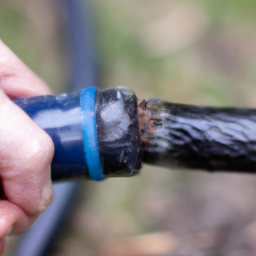How To Syphon Gas With A Garden Hose
Table of Contents []
How To Syphon Gas With A Garden Hose
Introduction
Safe siphoning of gasoline is an important practice to master in any situation. Despite it seeming tedious at first, it is an important skill to have in any collection of emergency supplies. From safely syphoning in a variety of emergency scenarios to creating a siphoning set up for long term storage, understanding how to syphon gas with a garden hose can make gasoline management much easier for any enthusiast or professional. In this article, we will explore the different aspects of syphoning gas safely and the equipment you will need, the different techniques for safe syphoning, and learn how to use your garden hose for syphoning.
Equipment and Preparation
The materials you'll need for syphoning gas with a garden hose involve the garden hose itself and a connection to the fuel source. The hose should be rated for use with gasoline: any standard garden hose will not be suitable for this purpose. As a general rule of thumb, having a garden hose made of any type of plastic is sufficient to prevent fuel degradation. For connecting the garden hose to the gas tank, you will need something like a multi-missle, which is a small, flexible valve that fits onto the end of the garden hose and allows for a seal to be created between the reservoir and the hose.
Siphoning Techniques
When it comes to syphoning gas, there are two main techniques to accomplish a safe and easy transfer. The first technique is called the direct-to-direct method, where a multi-missile connector is connected directly to the gas tank and the other end of the garden hose is used to siphon the gas out. This method allows for a direct transfer of gasoline from the tank to a container without any exposure to the environment or risk of contamination. The second method is called the agitation method, where a container is filled with water and then the multi-missile connector is attached to the tank's valve. The gas then rises up the hose and, upon reaching the container of water, it is forced out of the end of the hose and the fuel is collected in the container.
Using Garden Hoses For Syphoning
Using a garden hose for syphoning is one of the quickest and most convenient ways to transfer fuel from a tank to a collection container. To ensure safety when using a garden hose for syphoning, ensure that the hose is rated for use with gasoline, and make sure the multi-missile connection is tight and secure. Also, be sure to keep the siphon hose above the gasoline in the tank while siphoning to prevent the garden hose from burning or melting and to avoid any possible contamination of the source fuel. Finally, always handle the hose carefully to ensure that it does not become torn or kinked and that no fuel spills out of the hose as you siphon.
Summary
Safely syphoning gas with a garden hose is a vital skill to master because it is a key part of any fuel collection and storage set up. With the right materials and techniques, syphoning gasoline can be done quickly and conveniently. By paying attention to the type of hose used and taking steps to ensure it is securely attached to the tank's valve, you can easily and safely move fuel from one place to another with minimal fuss. For these reasons, understanding how to syphon gas with a garden hose is an important skill for anyone serious about fuel storage and management.

Previous Page
